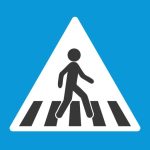Treating Compulsive Shopping As an Addiction

Can shopping be addictive? “Yes,” says the Cleveland Clinic. The health library at the Cleveland Clinic added an article on compulsive shopping a couple of months ago. Entitled, “How To Tell if You’re Addicted to Shopping,” it takes a refreshingly forward-looking approach to something people often snicker about.
The Cleveland Clinic article cites a meta analysis from 2016 that included 49 studies from 16 countries involving 32,000 subjects. Some of the interesting findings of this study into compulsive shopping behavior include:
- 4.9% of the population is estimated to suffer from uncontrollable shopping
- 8.3% of university students are estimated to be compulsive shoppers
- That number is no higher or lower in the United States than other countries
- Being young and female slightly increases the tendency toward compulsive shopping
The Cleveland Clinic clearly states that “pathological purchasing” is not recognized as a mental health disorder in the Diagnostic and Statistical Manual of Mental Disorders (DSM-5). However, it is recognized as a problem, and it can be a serious problem for some people leading to devastating financial and personal repercussions.
A 2024 systematic review of the scientific literature concerning cognitive functioning in persons suffering from compulsive buying says the disorder “shares clinical features with impulse control disorders” such as “cue reactivity and disadvantageous decision making.” Characteristics of compulsive shopping disorder are:
- replacement of all social activities with shopping
- continuing or escalating despite negative consequences
- impairment to important areas of functioning due to shopping
- failure to use or return most of the items purchased
Where does this unstoppable urge to spend come from? You won’t be surprised to learn it is our frequent gateway to mental health disorders: the displacement of stress. The Cleveland Clinic’s Dr. Susan Albers, the proprietor of the Eating Mindfully website, says, “Shopping often becomes a way of coping with stress, anxiety and depression.”
The systematic review cites boredom, discomfort and insecurity as negative emotions driving compulsive purchasing. They say that cues such as advertisements, social media influencers, and images of cash stimulate an abnormal response in compulsive shoppers. The temporary alleviation of negative thoughts through the empowering act of purchasing results in association bias that leads to greater sensitivity to triggers and cues.
The recommended treatments for compulsive shopping disorder are also familiar. They can include medication. GLP-1 receptor agonists have been found to reduce compulsive shopping behaviors in people prescribed drugs such as Ozempic for diabetes or obesity. The drugs reduce the withdrawal symptoms, including urges and cravings, that occur when compulsive shopping is stopped.
However, pathological purchasing problems will reappear when the patient stops taking the GLP-1 drugs unless the patient changes their behavior, usually through cognitive behavioral therapy (CBT). Dr. Albers recommends mindfulness training to learn patience in the face of cues and triggers.
Like eating addiction, shopping addiction is difficult to treat because some shopping is required regularly in ordinary life. To quote the systematic review:
Buying and shopping are necessary everyday activities. The complete avoidance of stores and online shopping platforms or abstinence from the consumption of consumer goods is not realistic. The ubiquity of advertising, merchandising, and other external buying/shopping stimuli can cause strong urges to buy/shop and craving responses.
The systematic review recommends improving working memory. Efforts to improve attentional bias and associative bias have been inconclusive to date. Functional magnetic resonance imagery (fMRI) can see regions of the brain light up more strongly in response to shopping-related imagery from people with compulsive shopping problems, but nothing has been found that calms those regions. Until the patient learns to resolve stress and discomfort by substituting less destructive activities when the urge to shop hits, they will find themselves surrounded by junk and swimming in debt.
Written by Steve O’Keefe. First published October 3, 2024.
Sources:
“How To Tell if You’re Addicted To Shopping,” Cleveland Clinic Health Library, July 30, 2024.
“The prevalence of compulsive buying: a meta-analysis,” Addiction, March 2016.
“Cognitive Functions in Compulsive Buying-Shopping Disorder: a Systematic Review,” Addictions, March 2023.
Image Copyright: Jeff Werner, used under Creative Commons license.




